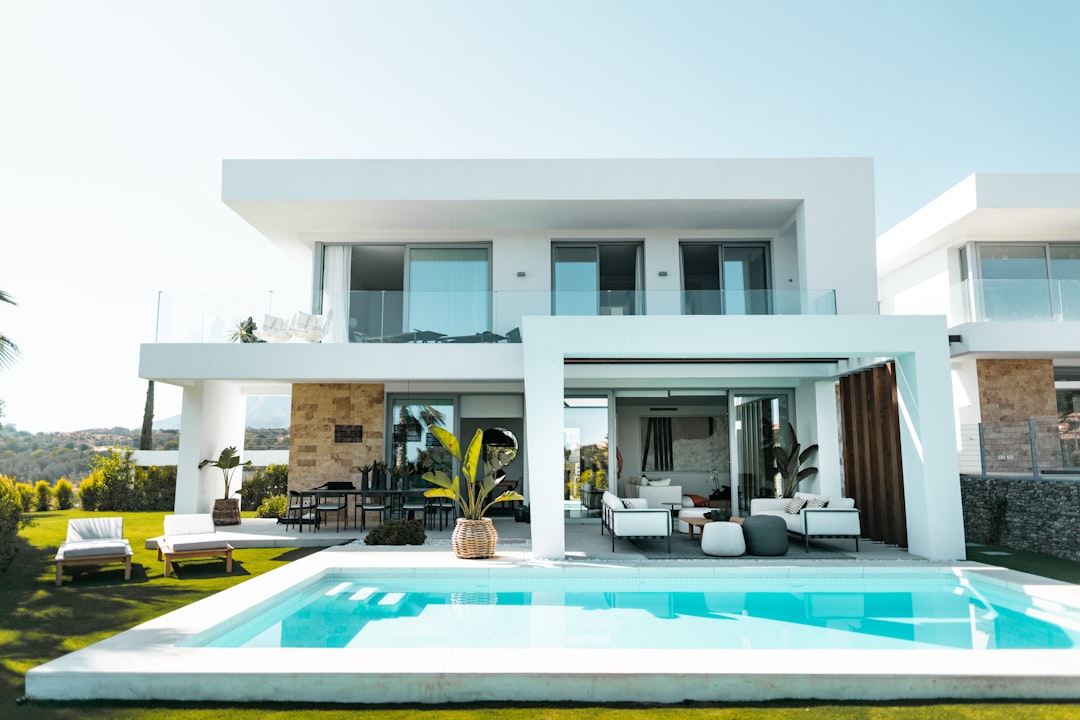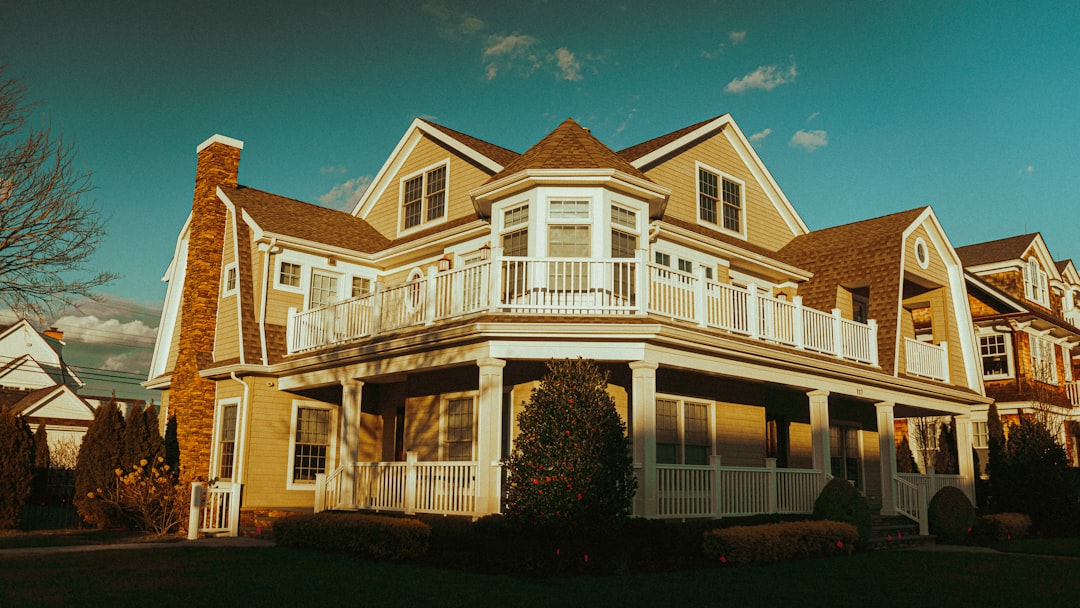

Engage prospects with a scan and streamline customer engagement with FREE QR code marketing tools by Sona – no strings attached!
Create a Free QR CodeFree consultation

No commitment

Engage prospects with a scan and streamline customer engagement with FREE QR code marketing tools by Sona – no strings attached!
Create a Free QR CodeFree consultation

No commitment
QR codes have evolved from simple scannable tags to essential tools for connecting offline engagement with online conversions. For real estate agencies, turning traditional marketing assets like property flyers, yard signs, and open house brochures into digital touchpoints is a significant challenge, even as adoption grows. See Forbes on real estate QR. Too often, potential clients interact with these materials without leaving a trace, resulting in missed opportunities for follow-up and conversion.
Lead capture, personalized follow-up, and showcasing listings in real time can all offer a competitive edge in a fast-moving market. Agencies relying on manual processes like sign-in sheets at open houses or paper-based referral forms risk losing valuable leads, especially when visitor information never makes it to the CRM. Modernizing these points of contact with QR code technology ensures every physical interaction becomes a data-rich, measurable opportunity.
Strategically integrating QR codes into property marketing enhances the client experience and solves persistent pain points: lack of visibility into offline interest, delayed lead capture, and difficulty tracking campaign success. This approach helps real estate teams improve lead quality, track buyer intent, and accelerate conversions throughout the client journey.

QR codes serve as a critical bridge where real estate agencies often lose high-value interest between traditional marketing and digital engagement. Potential buyers engage with print materials or attend events but may not submit a form, leaving agencies unaware of warm opportunities. By embedding QR codes in key assets, agencies can transform analog materials into measurable conversion paths and reduce the friction that typically prevents prospects from taking the next step.
The key is not just placing a QR code everywhere, but designing intentional journeys that move a prospect from awareness to action. Replace outdated processes like paper open house forms, brochure tear-offs, and generic yard sign phone numbers with QR-enabled experiences that capture identity, context, and intent. When these scans flow directly into your CRM and marketing tools, you can follow up within minutes, personalize outreach, and report on outcomes with confidence.
Streamlining analog processes with QR-enabled workflows improves efficiency, lead quality, and speed to response. Tools like Sona QR support the entire lifecycle: code generation, branding, dynamic link updates, analytics, and integrations that sync scan data with systems like Salesforce and HubSpot.

Fragmented lead tracking and limited visibility into offline engagement challenge many agencies. Prospective buyers often browse property flyers or interact with office displays without leaving a digital trace, which means agencies miss out on nurturing high-fit prospects. QR codes overcome these barriers by turning any physical touchpoint into a trackable digital entry point that captures context in real time. For measurement frameworks, see Sona on offline attribution.
For real estate, this translates to actionable intelligence on what buyers and sellers want. If a buyer scans a code on a condo flyer, lingers on the floor plan, then scans again from a yard sign across town, your team can connect those moments and prioritize outreach. Dynamic QR codes amplify this value by allowing you to update the destination content without reprinting, so your marketing stays relevant as inventory changes.
When paired with a platform like Sona QR, agencies gain granular metrics at the asset level, so a single bus stop poster or lobby display can be evaluated based on real engagement instead of guesswork.

Real estate teams can close the gap between anonymous offline interactions and actionable digital data using a handful of high-impact QR formats. Each format maps to a specific goal and moment in the client journey, helping your team collect the right data and prompt the right action at the right time.
The most effective formats in real estate are those that reduce friction in communication, make property discovery seamless, and streamline data capture. Start with the formats below, then layer on dynamic links to keep content current and measurable.
Prioritize web link codes for property discovery, mobile-optimized forms for lead capture, and vCards for quick, one-to-one connection. When powered by Sona QR, all formats can be managed in a unified dashboard for faster updates and consistent branding.

Identifying where high-intent prospects interact yet remain invisible is critical. Real estate is full of these offline moments, and QR codes can turn them into measurable pipeline. Map your buyer and seller journeys, then attach QR-enabled actions to each physical touchpoint.
Opportunities exist anywhere people pause, browse, or consider their next move. A well-placed code with a clear call to action can invite engagement, collect context, and move the prospect forward with little effort required on their part. See QR code signs for placement tips that boost scanning.
Strategically placed QR codes ensure agencies turn every moment of attention into a measurable, segmented opportunity. As patterns emerge, shift budget and inventory messaging toward the sources that generate qualified appointments.
Real estate teams can improve lead quality and shorten the path to consultation by focusing on a few high-impact, repeatable use cases. Each one converts attention into action and can be measured to guide ongoing optimization.
Start with the use cases below, then customize your destinations, copy, and creative to match target personas and property types. The goal is to deliver immediate value through the scan and capture enough data to continue the conversation across channels.
These use cases work across buyer, seller, and investor segments. A buyer might scan to tour a home, a seller to get a valuation estimate, and an investor to download a rental yield calculator. Centralizing code management in Sona QR ensures each audience gets the right destination and that your team can iterate quickly.
Each QR code scan is a powerful signal that combines location, timing, and intent. By deploying multiple QR codes across touchpoints, you create natural segments aligned with the buyer journey, which can be used for personalized follow-up through email, SMS, and paid media.
Real estate benefits from fine-grained segmentation because property preferences and timelines vary widely. Someone who scans a condo flyer on a weekday evening and schedules a tour has different needs than a homeowner scanning a valuation postcard on a weekend morning. Your campaign architecture should reflect these distinctions.
When each scan enriches a contact with preferences and behaviors, agents can reach out with relevant listings, comps, and timelines. Over time, your data grows more predictive, improving lead scoring and forecast accuracy.
QR codes unify siloed marketing efforts and create continuity between real-world discovery and digital conversion. Rather than treating print, events, and social as separate channels, think of QR codes as the connectors that allow you to capture demand wherever it emerges and route it into a single funnel.
This approach also improves measurement. Once scans are tagged by channel and placement, you can compare the effectiveness of postcards versus yard signs or property sheets versus lobby displays. Insights like these help align budget with revenue impact.
QR codes serve as the offline onramp to your digital marketing engine. With a centralized platform like Sona QR, you can manage all your codes, monitor performance, and sync scan data with your CRM and ad platforms to nurture each lead based on real behavior.
Successful QR campaigns start with clear goals, thoughtful design, and disciplined measurement. Treat each placement as a mini funnel: attract attention, set expectations, deliver value, and capture data you can act on. The steps below will help you plan, launch, and optimize with confidence.
Before you begin, decide which audience you want to influence and what the next best action should be. For example, a seller postcard might aim for valuation requests, while a yard sign might focus on tour scheduling. Align each QR code with one outcome and one message to keep the experience simple and compelling.
Define a specific campaign goal that maps to your pipeline, such as booking buyer consultations, collecting open house registrations, or capturing seller valuation requests. The clearer the goal, the easier it is to craft the destination experience and measure success.
Choose between static and dynamic QR codes based on the need for tracking, flexibility, and edits. Real estate campaigns usually benefit from dynamic codes because inventory, pricing, and offers change frequently.
Design influences scan behavior. Your QR code should be visually integrated with the creative while remaining readable at a glance. Use contrast, framing, and clear messaging to set expectations and drive action. See innovative QR advertising for design prompts that lift engagement.
Place codes where your audience already is, and match the destination to the moment. For example, a coffee shop lobby display might link to a “This week’s open houses” page, while a postcard to homeowners ties to an instant valuation tool.
Measurement closes the loop between scans and revenue. Use analytics to understand performance and iterate. Optimization is an ongoing process that compounds gains over time.
Modern QR code analytics enable agencies to follow the signal from the moment someone scans to the moment they convert. Tracking is not just about counting scans. It is about understanding how different placements, messages, and creative combinations influence behavior and revenue.
The most effective teams map scans to customer journeys. A buyer might scan a flyer, return later via social, then schedule a tour from an email. When your analytics platform connects these touchpoints, you can attribute outcomes properly and refine both creative and budget allocation. This level of insight is where QR codes evolve from a novelty to a core growth driver.
Sona QR captures the granular details of scan behavior while Sona stitches those signals into buyer journeys across your website, ads, emails, and CRM records. Together they provide attribution that your leadership can trust and optimization insights your marketing team can act on daily.
Scaling QR impact comes down to discipline: unique codes for each asset, clean tagging for analytics, strong CTAs, and automated follow-up. When those fundamentals are in place, you can add creative activations that surprise and delight, generating both conversions and brand goodwill.
Focus on tips that match the media you use most and the actions you want prospects to take. For most real estate teams, that means flyers, yard signs, postcards, and open houses. Build consistency across these touchpoints so that scanning always feels rewarding and familiar.
Creative deployment examples include QR codes on lawn signs that open a real-time showing schedule, or on thank-you cards after tours that request feedback and invite referrals. In both cases, the code turns a polite touchpoint into a measurable action that strengthens relationships.

Case studies and creative deployments demonstrate the power of QR in real environments. They also show how small changes to copy, placement, and destination can yield outsized results. Use the examples below as starting points, then tailor them to your brand and audience.
Agencies that consistently test and iterate improve performance across the board. They learn which neighborhoods respond to which offers, what messaging works best on signage, and which visuals drive tour requests. Over time, QR data becomes a competitive advantage that informs not just marketing, but inventory strategy and staffing.
These examples highlight the benefit of pairing QR with smart destinations and clear CTAs. Commit to a test-and-learn approach: pick one area, deploy multiple variants, and let the data guide your next iteration.
Teams that excel with QR codes design for the scan, not just the look of the print piece. They ensure codes are large enough, contrasted, and accompanied by a call to action that promises value. They also maintain their destinations so no prospect encounters a dead end.
Avoid the temptation to send every scan to your homepage. A tailored landing page aligned with the context of the scan will always perform better. In parallel, maintain transparency about data usage to build trust with clients over the long term.
QR codes are now a foundational strategy for real estate agencies that want to modernize lead generation and attribution. Transforming every physical asset into a digital entry point streamlines the client journey, improves pipeline visibility, and accelerates the sales cycle. With each scan providing new insights and opportunities, agencies can enrich CRM data, personalize touchpoints, and link marketing activities directly to revenue, enabling consistent growth backed by measurable results. Start creating QR codes for free.
QR codes have transformed real estate agencies from traditional marketing methods into dynamic, measurable conversion engines. Whether it’s attracting new buyers, enhancing property tours with instant access to listings, or capturing valuable lead data, QR codes replace guesswork with real-time insights and seamless mobile interactions that turn every property showing into a high-impact sales opportunity. Imagine knowing exactly which brochures or open house signs generate the most leads—and being able to optimize your strategy instantly.
With Sona QR, real estate professionals can create dynamic, trackable QR codes in seconds, update campaigns without the hassle of reprinting materials, and link every scan directly to revenue outcomes. This means smarter marketing, faster follow-ups, and more closed deals. Start for free with Sona QR today and transform every scan into a meaningful connection and a step closer to your next sale.
Choose a real estate agency that uses modern tools like QR codes to capture leads efficiently, integrates with CRM systems, and provides personalized follow-up to ensure high-quality service and measurable results.
Real estate agencies help buyers, sellers, and investors by showcasing listings, facilitating property tours, capturing leads through digital and physical touchpoints, providing valuation tools, and managing client follow-up and engagement.
QR codes transform physical marketing materials into trackable digital touchpoints that capture visitor data in real time, enable personalized follow-up, showcase dynamic listings, and provide analytics to optimize campaigns and increase conversions.
Working with a real estate agency ensures access to professional lead capture and nurturing technologies, expert guidance through buying or selling processes, efficient data management, and increased chances of faster, more successful transactions.
Agencies help by providing updated digital listings and tours, capturing buyer and seller information through QR-enabled forms, automating follow-ups, offering valuation tools, and using analytics to prioritize and personalize client outreach.
Use Sona QR's trackable codes to improve customer acquisition and engagement today.
Create Your FREE Trackable QR Code in SecondsJoin results-focused teams combining Sona Platform automation with advanced Google Ads strategies to scale lead generation

Connect your existing CRM

Free Account Enrichment

No setup fees
No commitment required

Free consultation

Get a custom Google Ads roadmap for your business






Launch campaigns that generate qualified leads in 30 days or less.
